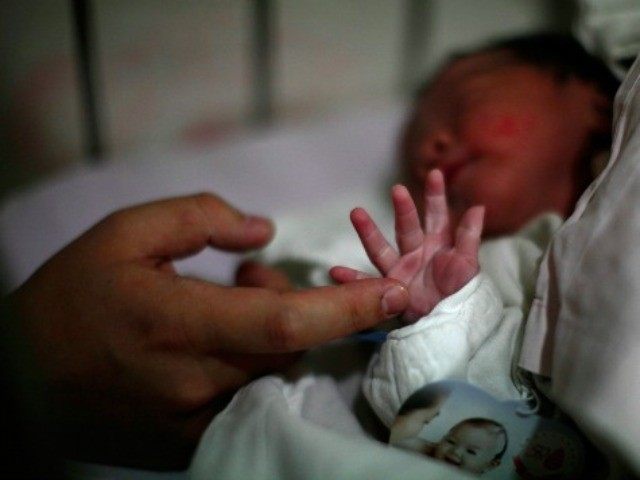Just over a decade on from assisted dying being legalised in the Netherlands, as many as 1 in 33 Dutch people are thought to have died this way, including 650 babies a year, euthanized so that their parents don’t have to witness them struggle with disability or disease. The escalation in death by euthanasia over the last six years has led one Dutch ethicist, who had been in favour of the law when it was first passed, to warn “some slopes truly are slippery.”
Earlier this week, eighty prominent Britons wrote to the Telegraph calling for a commitment from all the political parties to revisit the question of assisted dying in the next Parliament, if a vote is not taken on the matter before the general election in May.
They wrote: “If there is not enough time for the Bill to complete its stages before the general election then it is imperative that Parliament continues this important debate afterwards.
“We are closer than ever to allowing dying people to have safeguarded choice in how they approach their deaths. Whoever forms the next government must allow time for Parliament to reach consensus on a safeguarded law.”
The signatories included actors Eric Idle and Hugh Grant, the philosopher AC Grayling, Members of Parliament Caroline Lucas and the Rt Hon Dame Joan Ruddock, and former Archbishop of Canterbury Lord Carey.
However, evidence from the Netherlands, where the first assisted dying law was passed in 2002, has shown that, far from being a method of last resort, assisted dying is fast becoming a ‘lifestyle choice’. People who have chosen to die this way include a 47-year-old divorced mother of two who was suffering from tinnitus, a loud ringing in the ears. She left behind a 13-year-old son and a 15-year-old daughter, the Daily Mail has reported.
Her mother told the Mail: “Gaby told the children that she was planning to die, she was in pain and there was no cure for her.
“The euthanasia was agreed by doctors and she said her goodbyes and had time to organise her memorial service. She died a month later. Of course the children miss her badly, but they understand her decision.”
Although the law was designed to help terminally ill patients have a dignified death, the right to die has also been granted to a growing number of people who are physically healthy but have psychological problems. Official figures show that 13 patients suffering from mental illness were euthanized in 2011; by 2013 this number had risen to 42 patients.
And it is not just adults who are being euthanized. According to the Royal Dutch Medical Association, as many as 650 babies are killed by doctors each year because they are deemed to be in pain or facing a life of suffering.
Writing in the National Review, Wesley J Smith, senior fellow at the Discovery Institute’s Center on Human Exceptionalism has called on those who support assisted dying to “stop pretending assisted suicide is about terminal illness and admit it is much more about disability–which is why the disability rights movement remains so opposed as they are the primary targets. It is about allowing killing as an acceptable answer to many causes of suffering, whether terminal or chronic disease, disability, mental illness, or existential despair.”
The scale of the deaths has led former supporters of the right to die to change their minds. One such person is the Dutch ethicist Theo Boer, who, in 2007, said “there doesn’t need to be a slippery slope when it comes to euthanasia. A good euthanasia law, in combination with the euthanasia review procedure, provides the warrants for a stable and relatively low number of euthanasia.”
However, earlier this year he admitted “Most of my colleagues drew the same conclusion. But we were wrong – terribly wrong, in fact.”
Although the numbers of deaths remained steady between 2002 and 2008, even falling back a little in some years, over the last six years there has been an exponential growth in the number of assisted dying cases. 1,882 were euthanized in 2002, and by 2006 the number had barely risen, reaching 1,923. Yet by 2012, 4,188 cases were recorded, and in 2013, nearly 5,000. Figures aren’t yet available for 2014 but are expected to have topped the 6,000 mark.
This is due in no small part to constant pressure from Dutch Right to Die Society (NVVE) to push the boundaries of acceptability. Under Dutch law, GPs can administer injections to end life. The intention was that a person’s GP, who would have a long term doctor-patient relationship with that person, would have the option open as a last resort. However, the NVVE set up a number of travelling euthanasia “End of Life Clinics”, who either euthanize the person or send them away. On average their doctors see a patient just three times before killing them.
“The NVVE shows no signs of being satisfied even with these developments,” Boer has said. “They will not rest until a lethal pill is made available to anyone over 70 years who wishes to die. Some slopes truly are slippery.”
He warned “I used to be a supporter of legislation. But now, with twelve years of experience, I take a different view. At the very least, wait for an honest and intellectually satisfying analysis of the reasons behind the explosive increase in the numbers.
“Is it because the law should have had better safeguards? Or is it because the mere existence of such a law is an invitation to see assisted suicide and euthanasia as a normality instead of a last resort? Before those questions are answered, don’t go there. Once the genie is out of the bottle, it is not likely to ever go back in again.”

COMMENTS
Please let us know if you're having issues with commenting.